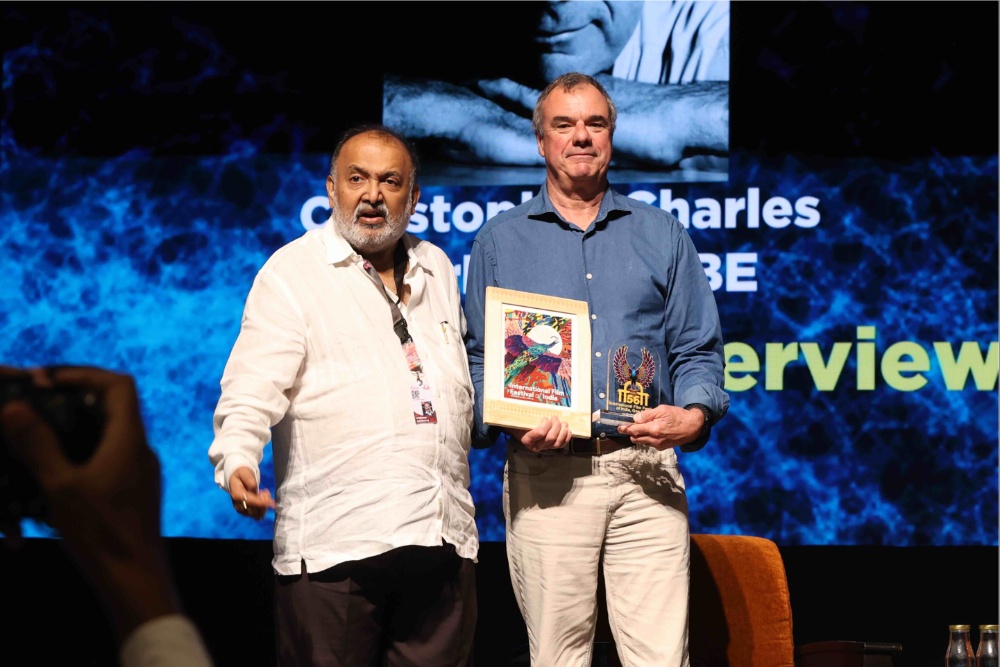At the International Film Festival of India, Oscar-winning special effects supervisor Chris Corbould pulled back the curtain on four decades of big-screen engineering from tank chases and truck flips to collapsing houses and controlled explosions insisting that the emotional power of spectacle still hinges on what can be achieved physically, not digitally. Speaking at a masterclass moderated by Variety’s Naman Ramachandran, Corbould revisited his work on the James Bond and Christopher Nolan films and stressed that his guiding rule remains unchanged: do as much as possible in camera, and let technology support the story rather than overwhelm it. The discussion was replete with anecdotes and movie clips that spanned some of cinema’s most ambitious practical stunts. Corbould, who won an Oscar award for best visual effects for “Inception,” explained that his philosophy has remained consistent throughout his career. Even as digital tools have evolved, he insisted that the strongest results come from collaboration, not replacement. “Digital is a fantastic tool,” he said, “but the minute you rely on it for everything, you start losing the emotional connection.” Corbould described his first step on any project as reading the script and asking how he can push originality. Sometimes this results in radical rethinking. Having worked on 15 Bond movies, he cited examples for a few including “GoldenEye”, recounting how a routine motorbike chase was transformed into the now-iconic tank sequence when Corbould proposed an out-of-the-box idea. Speaking about “No Time To Die”, he recalled scaling back an early version of the car chase because it threatened to overshadow the emotional tension between Bond and Madeleine: “What I learned over the years is, don’t get people going into a film just to see a spectacular effect. Everything should dovetail together the actors, the storyline, the locations. That’s a complete film, not just me blowing something up.” Christopher Nolan’s influence loomed large over the discussion. Their long-running collaboration is anchored in a shared belief that digital effects should be used only when the physical is impossible. This mindset led to some of the most daring sequences in modern cinema, including the revolving corridor in “Inception” and the real-life truck flip in “The Dark Knight.” Corbould admitted he initially doubted whether the truck flip could be achieved safely, but Nolan refused any digital workaround. “He pushes you to your absolute limits,” Corbould said. Many of Corbould’s achievements border on engineering feats. The sinking house in “Casino Royale” required a huge interior set capable of tilting and descending into a massive tank, paired with a detailed miniature for exterior shots. He also dispelled the myth that he enjoys blowing things up. Explosions, he noted, are the most stressful element of his job. He only relaxes once they’re finished. The record-breaking desert blast in “Spectre” a single-take, practical effect stunt conducted in Morocco “was never intended to be a world record” he said, but it was a shot that needed to look right. Beneath the spectacle, Corbould emphasised the countless hours of planning and safety checks that underpin every stunt, because the comfort and safety of actors and stuntmen is paramount. “The safety of the stunt driver and stunt people is totally non-negotiable,” he said. Looking toward the future, Corbould said of emerging AI tools that, just as digital effects once did, he believes they will find their place. “I hope directors keep valuing the physical craft,” he said. “Chris Nolan is the perfect example of that.”.
https://variety.com/2025/film/festivals/james-bond-batman-oscar-winner-chris-corbould-sfx-iffi-1236592474/
James Bond to Batman: Oscar Winner Chris Corbould Breaks Down the Art of Practical Spectacle at International Film Festival of India



